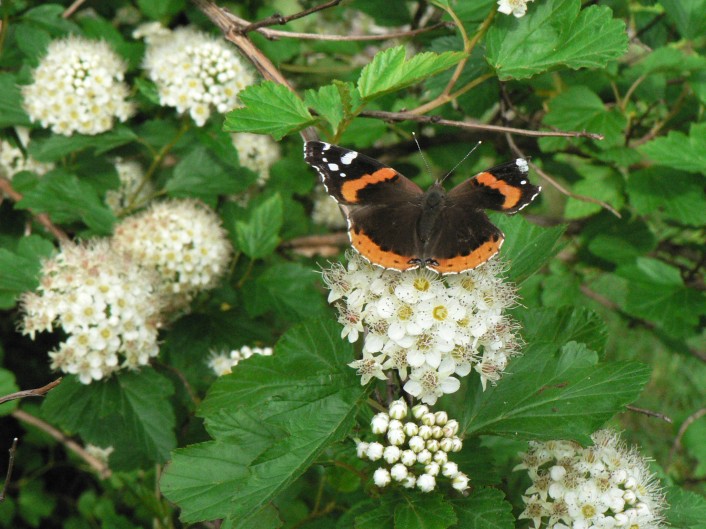There has been much emphasis lately on plants that benefit wildlife, especially pollinators such as bees. Most people think of native wildflowers for this purpose but there are many helpful, and beautiful, native shrubs that are important to wildlife.
Shrubs add to the overall diversity of a habitat and create an important mid-level layer between wildflowers and trees. Gardeners who are interested in planting for wildlife, should consider choosing native shrub species as they generally provide a greater food source, especially pollen and nectar, than most cultivars. An added bonus is that native species planted in the appropriate garden zone are also more tolerant of diseases and pests.
Here is an example of native shrubs in our area.
Willows (Salix spp.): Although most of us are familiar with the pussy willow, there are many species of willow shrubs found in our area. A welcome sign of spring, willows burst forth in late March or April. Willow flowers depend on insect pollination so they have conspicuous male catkins, usually facing upwards on the shrub. Both male and female catkins produce nectar, ensuring that some insect visitors will move between the plants and carry out pollination. Willows are especially important for solitary bees that come out very early in the spring. Willows prefer to grow in wet, open areas such as edges of wetlands and streams.
Ninebark (Physocarpus opulifolius): Even though it is not a common shrub, ninebark is an interesting plant in the landscape. The most obvious feature of this shrub is its papery bark that peels off at the base of the stems. For gardeners in areas with little snowfall, this provides an attractive winter feature. Ninebark flowers come out in June and are arranged in a round cluster. The cluster contains many tiny flowers that have nectar in the middle. This arrangement allows for a generalized pollination; insects attracted to the nectar can’t help but brush into the pollen. Ninebark shrubs can be found growing near river and lake edges.
Spirea (Spiraea spp.): These denizens of meadows may look like wildflowers, but they are actually woody-stemmed shrubs. There are several species of spirea in our area including meadowsweet and hardtack (or steeplebush). The name hardtack comes from the difficulty early settlers had in cutting this shrub in fields. The plant has a beautiful spike of soft purple flowers shaped a bit like the spire of a church, hence it’s other name, steeplebush. The flowers are quite unusual in that they bloom from the top down to the bottom of the spire. And even stranger, each bloom is first a male and then it becomes a female flower. The final result is that the lowest flowers are female and the top ones are male. Why this strategy? Bees visit the bottom flower first and then work their way up the spike. Once they reach the top, they move on to the bottom of another shrub. As the bee leaves the last plant, pollen is picked up and carried to the female flower on the next plant. This optimizes the chances of cross-pollination for the shrub.
There are other important native shrubs in our area including viburnums (e.g. nannyberry, highbush cranberry, and hobblebush) elderberries, and blueberries to name a few. All produce flowers that form an essential food source for insects and many produce berries that provide much-needed nutrients for birds and other wildlife.
Many of the properties protected by The Couchiching Conservancy provide the right habitat for our native shrubs. For a list of these properties, visit www.couchichingconserv.ca
Written by Gayle Carlyle.

